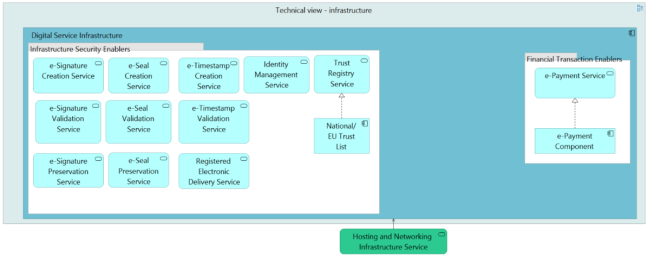This page presents the results of study conducted in the context of Action 2016.26 Interoperability agreements on electronic documents and electronic files of the ISA (Interoperability Solutions for European Public Administrations) Programme. It focuses on a reference architecture for e-Documents, but also refers to the report on the e-Document solutions in EU Member States, and the study about structured e-Document formats and e-Document engineering methods, previously conducted in scope of the Action.
The project officers in charge of this action are:
- Suzanne Wigard: Suzanne.WIGARD[at]ec.europa.eu
- Miguel Álvarez-Rodriguez: Miguel.ALVAREZ-RODRIGUEZ[at]ec.europa.eu
- Ana-Maria Murarasu: Ana-Maria.MURARASU[at]ec.europa.eu
1.What is an e-Document?
In the context of this study, an e-Document can be defined as any document in electronic format containing structured data and unstructured data used in the context of an administrative process. In other words, an e-Document can be treated as an atomic information entity that plays a role in administrative processes across its entire lifecycle: from creation till archival and deletion.
This definition is aligned with the MoReq2 (Model Requirements for the Management of Electronic Records) definition of a record, which is “information created, received, and maintained as evidence and information by an organisation or person, in pursuance of legal obligations or in the transaction of business”.
Independently of the used terminology, it is important to distinguish between the information with evidentiary and documentary character from any information object. An information object with documentary and evidentiary character is denoted as e-Documents in the scope of this architecture.
2.Reference Architecture for e-Documents
The reference architecture is the main outcome derived from the analysis of the usage of e-Documents carried out in 3 EU Member States: Spain, Estonia and Denmark. It is presented in the form of a web-page, which enables easy navigation through e-Document lifecycle described through a number of supporting ArchiMate diagrams.
The main purpose of this architecture is to help solving specific needs/challenges related to the usage of e-Documents and to help the architects of e-Document solutions in the public administrations of the EU Member States to make “informed” architectural decisions.
In what follows, a brief overview of the reference architecture for e-Documents is provided.
- Legal view: It contains the most important legislative elements that must be taken into account when designing an e-Document solution such as public policies in scope, binding legal requirements and constraints.
- Organisational View: It represents the entire lifecycle of e-Documents, including creation, management, exchange, preservation/archiving and deletion.
- Semantic view: It refers to the most important semantic decisions that need to made when dealing with e-Documents, mainly focusing on defining the logical organisation of e-Documents, i.e., how the content, metadata and electronic signatures are bundled together, and how multiple e-Documents can be organised in the form of a file or a case. Also, it refers to the metadata types used across the e-Document lifecycle.
- Technical view: It consists of the application and infrastructure views, which contains the building blocks used to implement specific functionalities required to support an e-Document solution.
3.Studies on structured e-Document formats
- Tutorial: On the use of Crane’s Genericode-to-UBL-NDR to extend the Core Vocabularies and create e-Document formats, April 2014.
- Study: Analysis of structured e-Document formats used in Trans-European Systems, May 2014.
- Study: Guidelines for public administrations on e-Document engineering methods, June 2014.






